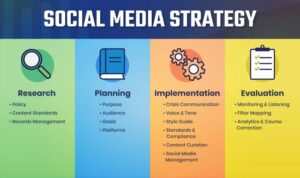Website Conversion Rates set the stage for online victory, where businesses thrive or dive. Get ready to dive into the world of web success with key insights and strategies that’ll take your game to the next level.
Understanding Website Conversion Rates
Website conversion rates refer to the percentage of website visitors who complete a desired action, such as making a purchase, signing up for a newsletter, or filling out a contact form. It is a crucial metric for businesses to track as it directly impacts the success of their online presence and marketing efforts.
Importance of Website Conversion Rates
Website conversion rates are essential for businesses to measure the effectiveness of their website in converting visitors into customers or leads. By analyzing conversion rates, businesses can identify areas for improvement, optimize their website, and ultimately increase their ROI.
- E-commerce industry: Online retailers use website conversion rates to track the number of purchases made compared to the total number of visitors, helping them optimize product pages, checkout process, and marketing strategies to increase sales.
- SaaS industry: Software as a Service (SaaS) companies measure conversion rates to evaluate the effectiveness of their free trials or demo sign-ups in converting leads into paying customers. This data informs their sales and marketing strategies to improve customer acquisition.
- Lead generation industry: Businesses focused on lead generation analyze website conversion rates to measure the success of their lead capture forms, landing pages, and call-to-action buttons in generating qualified leads for their sales team.
Factors Influencing Website Conversion Rates
When it comes to website conversion rates, there are several key factors that can have a significant impact on how successful your site is at turning visitors into customers. From website design to user experience to content quality, each aspect plays a crucial role in determining the conversion rates of your website.
Website Design and User Experience
Effective website design and user experience are essential in influencing website conversion rates. A well-designed website that is visually appealing, easy to navigate, and optimized for both desktop and mobile devices can significantly improve the user experience. By ensuring that visitors can easily find what they are looking for and complete actions such as making a purchase or filling out a form, you can increase the likelihood of conversions.
Content Quality
The quality of the content on your website also plays a crucial role in influencing conversion rates. High-quality, engaging content that is relevant to your target audience can help build trust, establish credibility, and encourage visitors to take the desired action. Whether it’s informative blog posts, compelling product descriptions, or persuasive call-to-action buttons, the content on your website should be designed to guide visitors through the conversion funnel.
Strategies to Improve Website Conversion Rates

In order to increase website conversion rates, it is crucial to optimize landing pages, conduct A/B testing, and implement effective call-to-action strategies.
Optimizing Landing Pages
Optimizing landing pages is essential for improving website conversion rates. Some actionable tips include:
- Ensuring a clear and compelling headline
- Streamlining the design for easy navigation
- Including high-quality images and videos
- Adding customer testimonials for social proof
- Creating a sense of urgency with limited-time offers
A/B Testing
A/B testing is a powerful tool for improving website conversion rates by comparing two versions of a webpage to see which performs better. It is important to:
- Test different elements such as headlines, images, and call-to-action buttons
- Use a reliable A/B testing tool to track and analyze results
- Make data-driven decisions based on test outcomes
Call-to-Action Strategies, Website Conversion Rates
Implementing effective call-to-action strategies can significantly impact conversion rates. Some successful examples include:
- Using action-oriented language like “Shop Now” or “Request a Quote”
- Placing the call-to-action prominently on the page
- Creating a sense of urgency with phrases like “Limited Time Offer”
- Offering incentives such as discounts or free trials
Analyzing Website Conversion Rate Data

Analyzing website conversion rate data is crucial for businesses to understand how effective their online presence is in converting visitors into customers. By examining this data, companies can make informed decisions to optimize their websites and marketing strategies for better results.
Significance of Tracking and Interpreting Conversion Rate Metrics
Tracking and interpreting conversion rate metrics is essential for businesses to measure the success of their online efforts. By monitoring metrics such as conversion rate, bounce rate, and average session duration, companies can gain valuable insights into user behavior and preferences. This data can help businesses identify areas for improvement and implement changes to increase conversion rates.
- Conversion Rate: This metric measures the percentage of website visitors who take a desired action, such as making a purchase or filling out a form. By tracking conversion rates, businesses can determine the effectiveness of their website in driving conversions.
- Bounce Rate: The bounce rate indicates the percentage of visitors who leave a website without interacting with any other pages. A high bounce rate may signal that visitors are not finding the information they need or that the website is difficult to navigate.
- Average Session Duration: This metric shows the average amount of time visitors spend on a website. A longer average session duration can indicate that visitors are engaged with the content, while a short duration may suggest that the website is not meeting their expectations.
Using Tools like Google Analytics to Monitor and Improve Conversion Rates
Google Analytics is a powerful tool that businesses can use to track and analyze website performance. By setting up conversion tracking in Google Analytics, companies can monitor key metrics and identify opportunities for optimization. Businesses can also use features like A/B testing to test different variations of web pages and determine which ones lead to higher conversion rates.
By leveraging tools like Google Analytics, businesses can make data-driven decisions to improve their website conversion rates and ultimately drive more sales and leads.











